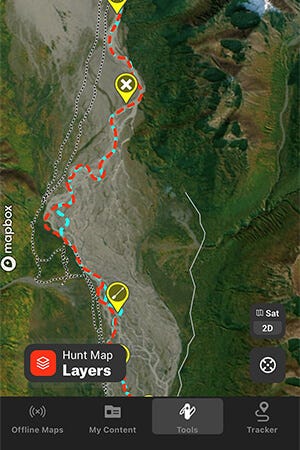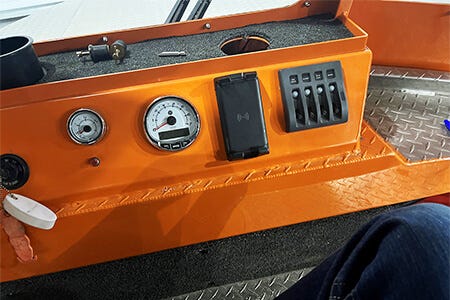

Running jet boats on rocky, fast-moving rivers like those found in the Pacific Northwest is a very different experience from the lake, bay and ocean boating most of us are familiar with. For one thing, finding where you’re going is much simpler, since there’s only one route. Think of it like following a rough, winding dirt road through a forest. You can maneuver around bumps and holes, but leaving the road isn’t an option.
Contents
Maps vs. Charts for River Jet Boaters
That makes conventional marine chartplotters and electronic charts essentially useless for navigation on the wild, remote rivers jet boaters favor. Even if you’re on a river big enough to be shown on the chart, its rocks, rapids, and bars won’t be.
Besides, those features move and change over time, so any kind of detailed chart would be obsolete almost as soon as it was published.
Even if you’re on a river big enough to be shown on the chart, its rocks, rapids and bars won’t be.
Instead, boaters like Nate Miller — who runs a Riddle Marine RMX 17 on the rivers and creeks of his home state of Alaska and also occasionally trailers four days south to Idaho for trips on the Snake and Salmon rivers — favor mapping apps intended for hikers and hunters. These not only provide detailed views of banks and canyon walls, allowing boaters to see where they are on the river, but also record and save precise tracks.
Phone Mounting Issues
Miller chose the onX app, which he runs on his iPhone, but for years he had trouble keeping the phone secure and within reach at the helm.
“I propped it up on the dash for a while and then tried different cup holder mounts,” Miller says. “But the way we run, it’s pretty intense. The phone doesn’t stay put.”
It takes only a couple minutes of watching the videos on Miller’s YouTube channel to understand what he means by intense.
Eventually, Miller found a suction cup-based phone mount that did a good job of protecting and positioning the phone, but charging presented another issue. “It takes tons of power to run that GPS all day and keep the display on the whole time,” says Miller, “so the phone would die a lot of the time.”
Phone Charging Issues
A dead phone part way through the day can be a safety issue on an unfamiliar river. Jet boaters find their way through rapids, log jams, braided channels and other obstacles while headed upstream, when they can go slower and see better, and then follow their GPS track on the trip back downstream, when everything happens much faster.
A dangling charging cable at the helm of a whitewater jet boat is going to get knocked loose, stepped on, soaked or worse.
Keeping the phone connected to a charging cable seems like an obvious solution, but it’s not a good one. A dangling charging cable at the helm of a whitewater jet boat is going to get knocked loose, stepped on, soaked, or worse. Plus, if you happen to forget your charger, you’re quite literally up a creek.
A Secure, Wireless Charger
The solution, Miller reasoned, was something like a docking station for his smartphone — a rock-solid, waterproof mount with a built-in charger. But finding one wasn’t easy. “They have wireless chargers that don’t hold your phone securely,” says Miller, “and then they have chargers that hold your phone securely but have a cord.” Finally, he came across the line of ROKK wireless chargers and mounts, made by the marine equipment manufacturer Scanstrut.
He settled on the Active model, which mounts directly to a flat surface, features high-grip jaws to hold phones securely even when it gets rough, and provides completely waterproof 10W wireless charging. Now, Miller locks his phone into the dash-mounted charger in the morning, sets it so it will never automatically sleep, starts his mapping app, and doesn’t worry about it the rest of the day.
Now, Miller locks his phone into the dash-mounted charger in the morning, starts his mapping app, and doesn’t worry about it the rest of the day.
Installation, Miller says, was simple. After removing a nearby cup holder and his switch panel for access, he used a provided template to drill four small mounting holes in the dash and one larger 1/4” hole for the power cable, which he connected at the switch panel.



